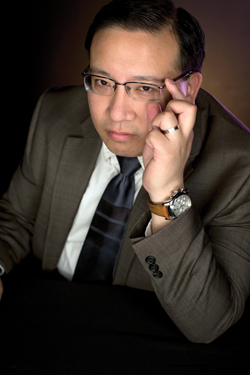Law Scribbler
Creator of the DuPont model makes an inside move

Photo of Victor Li by Saverio Truglia
Sager's departure from DuPont was no surprise. At 64, he was one year away from DuPont's mandatory retirement age and wasn't ready to call time on his career just yet.
"I could have stayed until the end of next year, but the company is going through some significant changes and spinning off several entities," Sager says. "I didn't think I'd be committed to staying put and seeing it through."
Instead, Sager decided to join the law firm world—one irrevocably changed as a result of his tenure at DuPont Legal. In 1992, with the company facing a deluge of toxic torts cases, Sager unveiled the DuPont legal model. The model aimed to cut down on the number of law firms representing DuPont, and the bills for their services. Instead of paying by the hour, DuPont's model called for outside firms to be paid based on hitting various performance metrics. It also forced outside counsel to work more closely with their clients to devise budgets and contain costs.
"When we first started to create the model, there was some caution, and maybe even cynicism, from law firms until we could demonstrate to them that we were committed to their well-being as well as ours," Sager says.
Sager was drawn to Ballard Spahr because of DuPont's positive history with the firm. Ballard has been one of the company's primary outside firms, and Sager says the firm has been a leader in embracing racial and gender diversity, an issue Sager takes extremely seriously.
While Sager, who will split his time between Philadelphia and Wilmington, Delaware, intends on representing clients—indeed, he got a request to be retained from a client within two days of joining Ballard—he says his work will be more in the business development sphere. He also intends to speak out about what he sees as a big problem with many law firms: partner compensation.
" 'Eat what you kill' is very insidious and doesn't serve the industry well," he says. "It doesn't serve to advance to any number of things we need, like a diverse group of attorneys eager to demonstrate their worth. In fact, it will slow their progression."
Given the economic situation, Sager says, many firms are too willing to let senior-level partners continue to generate large fee arrangements without rewarding younger lawyers who might be doing most of the work. In that vein, Sager says, law firms must re-examine how they use origination credits.
"I might have brought DuPont to the firm, but after 16 years, it's absurd if I'm still being compensated for it," he says. Plus, origination credits hurt young lawyers, especially minorities and women. "By being late to the table," says Sager, "they aren't getting the kind of presence and profile with major clients they need."
Victor Li shares his reporter's notebook at ABAJournal.com/lawbythenumbers and on Twitter as @LawScribbler.



